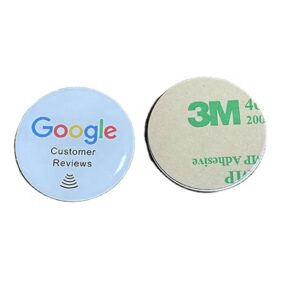Mündəricat
DəyişdirinGiriş
An NFC etiketi, often found as a diminutive sticker featuring a slender copper coil and an embedded microchip, acts as a reservoir for digital data. This coil plays a critical role in drawing power from an adjacent NFC reader through a process known as electromagnetic induction. Upon the approach of an NFC reader, the tag is activated, facilitating the relay of information from the microchip to any device that supports NFC technology.

The Core Components of an NFC Tag
Each NFC tag is comprised of a miniature circuit that includes a copper coil for power reception and a microchip for data storage. This unique setup allows the tag to operate without its own power source, instead relying on the nearby reader for the necessary energy to activate and transmit data.
Activation and Data Transmission
The interaction begins when an NFC reader comes into proximity with a tag. Through electromagnetic induction, the tag receives power from the reader, enabling the microchip within the tag to wake up and send its stored data to the reader, which then processes the information as required.
Diversity in NFC Tag Types
NFC tags are categorized into five distinct types based on their storage capacity and data transfer speed. Type 1 tags, considered the most basic, provide a storage space of one kilobyte and function at relatively slow data transfer speeds of around 100kbps. Conversely, type 5 tags, the most advanced in the spectrum, boast a larger memory capacity of up to 32KB and offer data transfer speeds that are 4-5 times faster than their type 1 counterparts.
Selecting the Right Tag
Although the range of NFC tags offers varied capabilities, types 1 and 2 are most prevalent in practical applications. Their limited storage and modest transfer speeds are generally sufficient for the majority of tasks involving NFC, accommodating the typical volume of data exchanged through these tags.
Nəticə
NFC tags stand as a testament to the innovative strides made in data storage and wireless communication technology. Their simplicity in design belies a sophisticated system capable of a seamless exchange of information with the mere proximity of an NFC reader. As we continue to embrace the convenience and efficiency of NFC technology, it’s clear that these tiny yet powerful tags play an indispensable role in the digital age, bridging the gap between the physical and digital worlds in countless applications.
